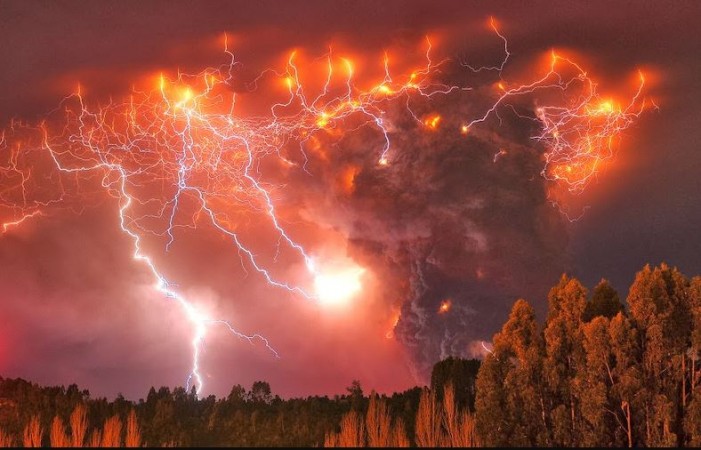
Lightning, one of nature's most awe-inspiring phenomena, illuminates the sky with its brilliant flashes and rumbling thunder. This natural occurrence has fascinated humans for centuries, sparking curiosity and inspiring countless myths and legends across cultures. In this article, we will explore the science behind lightning, its occurrence, safety tips, impact on humans and nature, interesting facts, cultural significance, and the advancements in research and technology related to this magnificent display of electrical power.
The Science Behind Lightning
Formation of Thunderstorms
Thunderstorms, the birthplace of lightning, are complex weather systems that require specific conditions. When warm, moist air rises and collides with cooler air, it creates unstable atmospheric conditions. This results in the formation of cumulonimbus clouds, also known as thunderclouds.
The Role of Cumulonimbus Clouds
Cumulonimbus clouds, with their towering heights and anvil-shaped tops, contain massive amounts of energy. These clouds serve as the breeding grounds for electrical charges that eventually lead to lightning.
Separation of Electrical Charges
As a thunderstorm intensifies, strong updrafts force smaller ice particles upward while heavier raindrops fall. This separation of electrical charges within the cloud creates a strong electric field between the cloud and the ground.
How Lightning Strikes Occur
Stepped Leader and Return Stroke
When the electric field becomes strong enough, it ionizes the air and creates a path for the electrical discharge to travel. This initial pathway, known as the "stepped leader," inches towards the ground in a series of quick steps. Once it connects with a positively charged object on the ground, the "return stroke" follows, creating the visible lightning bolt.
Types of Lightning
There are several types of lightning, including cloud-to-ground, cloud-to-cloud, intra-cloud, and cloud-to-air discharges. Each type varies in appearance and occurs in different parts of the thundercloud.
Frequency of Lightning Strikes
It might be surprising to know that lightning strikes the Earth approximately 8.6 million times per day. The majority of these strikes occur in regions with a high frequency of thunderstorms, such as the tropics and temperate regions.
Lightning Safety Tips
Seeking Shelter Indoors
When thunder roars, it is essential to seek shelter indoors immediately. Staying away from windows and avoiding contact with electrical appliances and plumbing is crucial to reduce the risk of injury.
Avoiding Electrical Appliances and Plumbing
During a thunderstorm, it is advisable to refrain from using electrical appliances and avoid contact with plumbing, as lightning can travel through these conductive materials.
Staying Away from Water Bodies
Seeking shelter near water bodies, such as lakes or swimming pools, can be dangerous during a thunderstorm. Water is an excellent conductor of electricity, and lightning can strike its surface.
The Impact of Lightning on Humans and Nature
Injuries and Fatalities
While lightning strikes are relatively rare, they can cause severe injuries and fatalities. Understanding the risks associated with lightning and adopting safety measures is crucial to minimize harm.
Wildfires Caused by Lightning
Apart from the immediate dangers to humans, lightning strikes can trigger wildfires, posing a threat to ecosystems, wildlife, and human settlements.
Positive Effects of Lightning
Interestingly, lightning also plays a vital role in the Earth's nitrogen cycle. It helps convert atmospheric nitrogen into a form that plants can use, promoting plant growth.
Lightning Myths and Facts
Attracting Lightning with Metal Objects
Contrary to popular belief, metal objects do not attract lightning. Instead, tall structures, such as trees and buildings, are more likely to be struck due to their height.
Lightning Never Strikes the Same Place Twice
This commonly held belief is a myth. Lightning can strike the same location multiple times, especially if it offers the shortest path to the thundercloud.
Lightning Can Be Predicted
While advances in technology have improved thunderstorm forecasting, predicting the exact occurrence of lightning strikes remains challenging.
Interesting Facts about Lightning
The Longest Lightning Bolt Recorded
The longest lightning bolt ever recorded was an astounding 199.5 miles (321 kilometers) long. It stretched across the state of Oklahoma, USA.
Lightning and the Formation of Life
Scientists believe that lightning might have played a significant role in the formation of life on Earth. It could have provided the necessary energy for the chemical reactions that led to the development of life.
Ancient Beliefs and Lightning
In ancient cultures, lightning was often associated with powerful deities and considered a symbol of divine intervention.
Lightning in Art and Culture
Lightning in Mythology
Lightning holds a prominent place in mythology worldwide, symbolizing various aspects, including power, wrath, and creation.
Symbolism of Lightning in Artworks
Artists have incorporated lightning into their masterpieces as a symbol of dramatic and supernatural elements.
Influence on Modern Media
From literature to films, lightning's mystique and power continue to captivate modern audiences, often serving as a powerful storytelling element.
Advances in Lightning Research and Technology
Lightning Detection Systems
Sophisticated lightning detection systems have been developed to monitor and track lightning activity, providing valuable data for research and safety measures.
Capturing Lightning in High-Speed Photography
Advancements in high-speed photography have enabled researchers to capture lightning in stunning detail, unraveling its complex behavior.
Studying Lightning on Other Planets
Scientists study lightning on other planets, such as Jupiter and Saturn, to gain insights into the atmospheric processes of celestial bodies.
Lightning is a natural phenomenon that continues to inspire wonder and curiosity. Understanding the science behind lightning, its safety implications, and its impact on humans and nature is essential for fostering a deeper appreciation of this breathtaking display of nature's power. As we continue to advance in research and technology, our knowledge of lightning will grow, unlocking new insights into the mysteries of this fascinating electrical phenomenon.
Govt Action Looms for Twitter after Viral Video of Manipur Women Paraded Naked
Manipur Unrest: CM Urges Thorough Probe into Viral Video's Authenticity
Sonia Gandhi Urges PM Modi for Manipur Discussion in Parliament